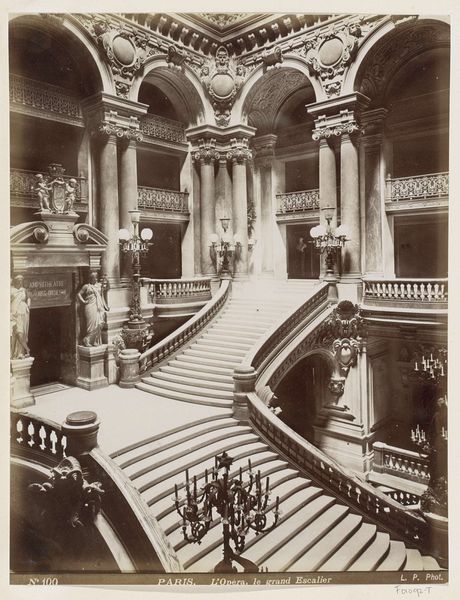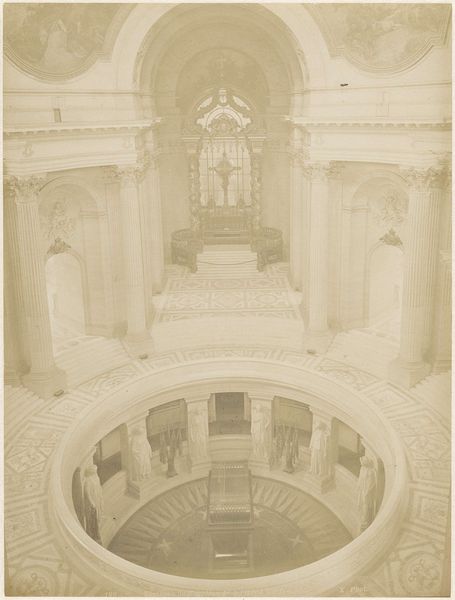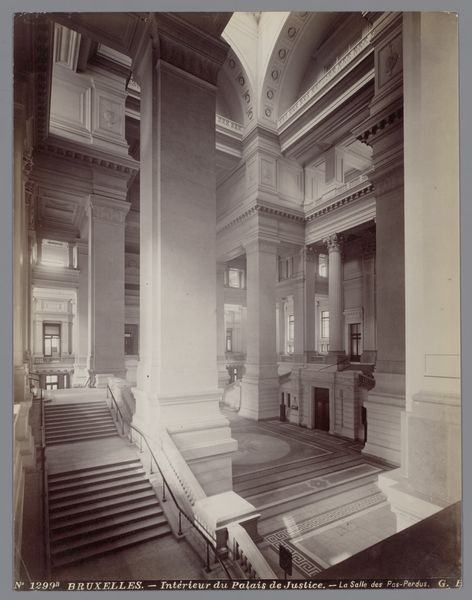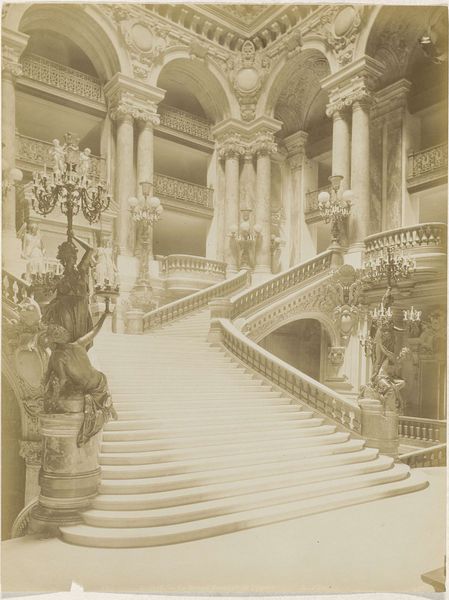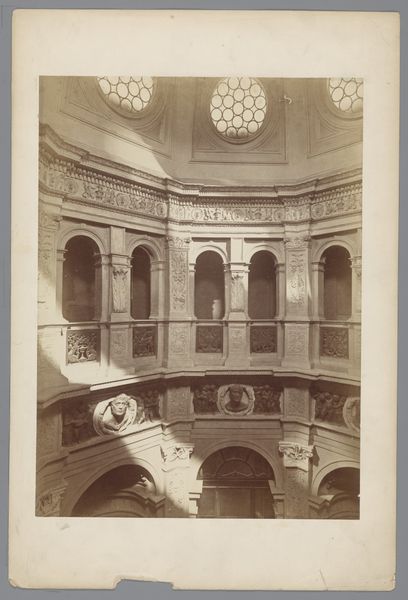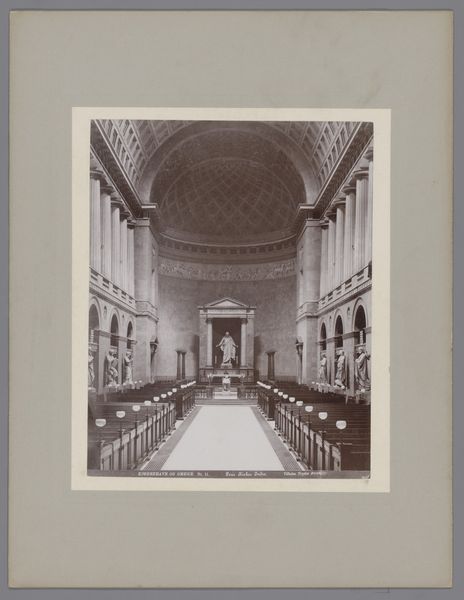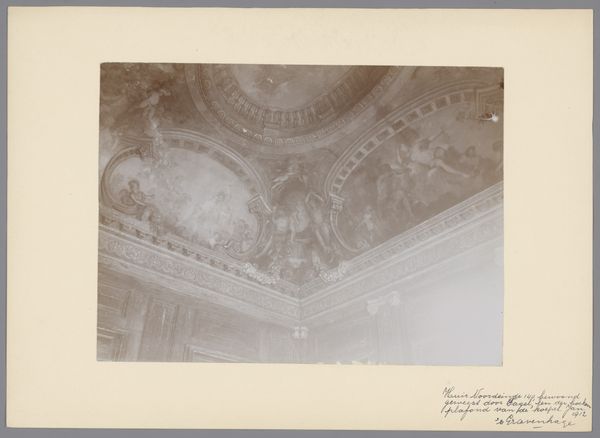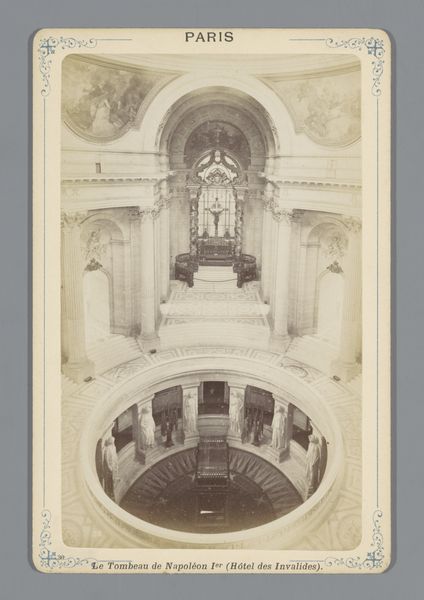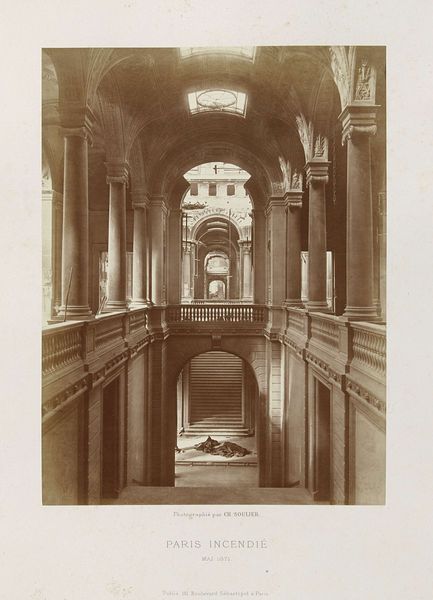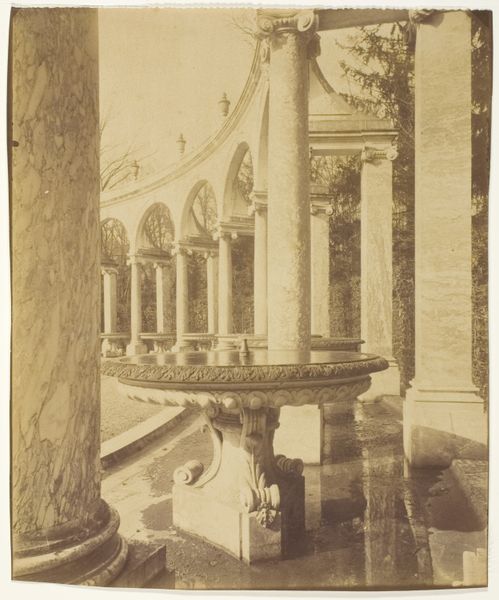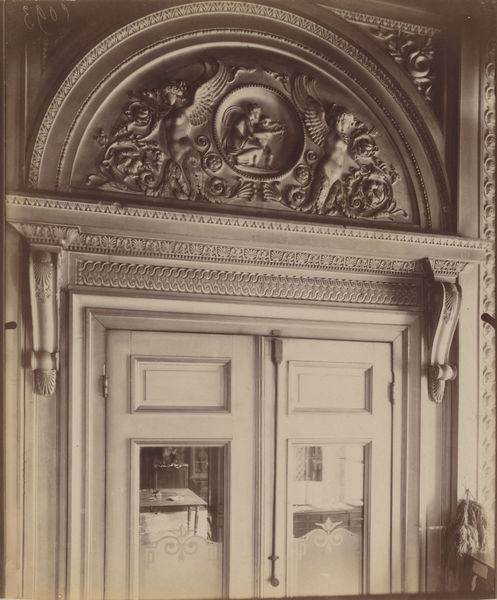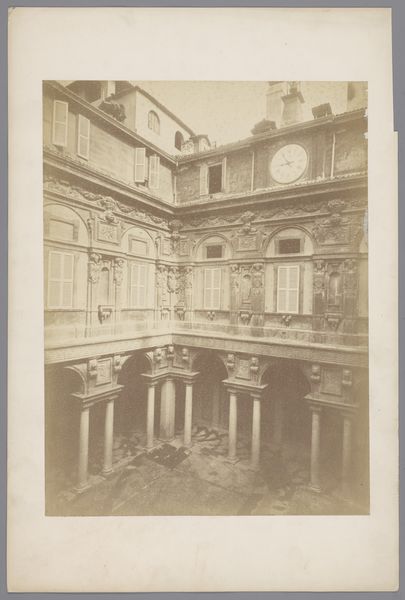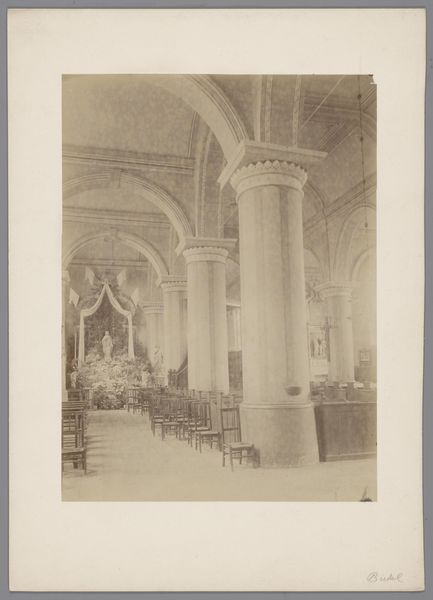
Kapel en tombe van Napoleon in het Hôtel des Invalides te Parijs 1870 - 1900
0:00
0:00
Dimensions: height 276 mm, width 212 mm, height 404 mm, width 304 mm
Copyright: Rijks Museum: Open Domain
Curator: The photograph before us, "Kapel en tombe van Napoleon in het Hôtel des Invalides te Parijs," attributed to Louis Antoine Pamard and dating from 1870 to 1900, is a collotype print, capturing the grand architecture. It is an impressive, formal presentation of historical architecture and traditional building. What's your take? Editor: It feels… overwhelming, in a way that both attracts and repels. That vantage point looking down feels like being watched, like some celestial bureaucrat is filing away another life lived. Curator: Indeed. Collotype, as a printing process, allows for continuous tones and subtle gradations that evoke a strong sense of depth, a characteristic particularly important here. It conveys both the scale of the site, and provides detail about construction, methods, and design elements. We see the material reality of the Hotel des Invalides, from the marble to the labor involved in its creation. Editor: Exactly. You can almost hear the echoes bouncing off the dome, imagine the chill of the marble on your skin. It really makes you think about how history isn't just dates and battles; it’s etched in the stone, in the very air of a place like this. Plus, that gaze of the photo… it is almost unnervingly clean. Curator: The technical prowess behind this print shouldn't be understated. Photography was very actively expanding its place within discourses surrounding realism and historical representation at the time, and prints like this made those technologies and the debates around them visible to broad audiences. Editor: Which is perhaps why it still feels so staged, like a tableau vivant meant to instill a sense of awe and… I don't know, the weight of destiny, maybe? But then, looking closer at the architectural detail... it also touches my inner sense of wonder at spaces crafted to transcend mere utility. To provoke a divine confrontation through sheer crafted geometry and careful planning of space. Curator: Considering Napoleon's complex legacy—military leader, reformer, and emperor—this mausoleum becomes a compelling site to examine the relationships between power, history, and representation. Editor: It really prompts a conversation about legacy, doesn’t it? Not just Napoleon’s, but ours. What structures are we building, both literally and figuratively, and what stories will they tell about us? Curator: Absolutely. Thinking through Pamard's photo enables one to engage in productive discourses regarding social meaning, and labor invested in constructing the edifice before us, with a fresh set of eyes. Editor: Yes, what might appear at first as mere documentation is, through your explanation and with careful consideration of its aura, both a ghost and invitation to consider our place in the passage of time.
Comments
No comments
Be the first to comment and join the conversation on the ultimate creative platform.
